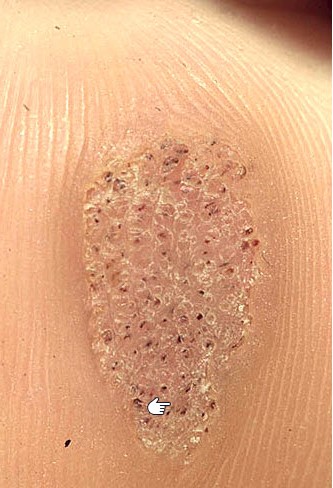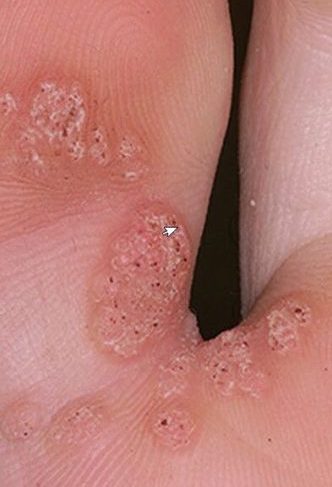Warts – Plantar Warts (Verruca)
Warts, which are caused by a virus, can be quite painful. They are frequently called plantar warts, because they appear most often on the plantar surface or sole of the foot. The medical term is a “verruca.” They can appear anywhere on the skin of the foot or the hand.
Children, teenagers, and young adults tend to be more susceptible to warts than adults. Some people seem to be immune and never get them. Although adults also get plantar warts, it is relatively uncommon.
Identification Problems
Most warts are harmless and benign, though painful. They are often mistaken for corns, which are layers of dead skin that build up to protect an area which is being continuously irritated.
Although they are not common, it is also possible that a variety of other more serious lesions, including carcinomas and melanomas, can be mistakenly identified as warts. Because of those identification problems, it is wise to seek a consultation about any suspicious growth or eruption on your feet.
On the bottom of the feet, plantar warts tend to be hard and flat, rough-surfaced, with well-defined boundaries. They are generally fleshier when they are on the top of the feet or the toes. They are often gray or brown with a center that appears as one or more pinpoints of black.


Source of the Virus
The plantar wart is often contracted by walking barefooted on dirty surfaces or littered ground where the virus is lurking. The virus is sustained by warm, moist environments. The exact manner in which a wart develops from a virus is unclear. If left untreated, warts can grow to an inch or more in diameter, and they can spread into clusters of several warts.
Warts can last for varying lengths of time. Occasionally, they spontaneously disappear after a short time. Perhaps just as frequently they can recur in the same location.
Tips for Prevention
Avoid walking barefooted, except on sandy beaches
Change shoes daily
Keep feet clean and dry
Check children’s feet periodically
Avoid direct contact with warts — from other people and from other parts of the body
Do not ignore skin growths or changes in your skin
Self Treatment
Self treatment is generally not advisable. Over-the-counter preparations contain chemicals, such as a acid that destroy skin and wart cells. These types of treatment are lengthy and often ineffective. Care must be taken to destroy abnormal wart cells without also affecting the surrounding healthy tissue. Self treatment with such medications especially should be avoided by diabetics and those with circulation problems which cause insensitive feet. Never use them in the presence of an active infection.
Laser Treatment and other Medical Treatments
The fastest method of treating a plantar wart is with a yag laser. In most cases, it is not necessary to inject a local anesthetic. Depending upon the size and number of warts, they can often be treated in one or two office visits. The focused laser exposure quickly eliminates the blood supply to the wart and destroys the virus. The benefits of laser treatment are: 1. No after-care or dressings are required, 2. Normal activities can be resumed immediately after treatment, 3. Regular bathing can begin immediately, 4. Minimal tenderness after treatment, 5. Office laser treatment takes less than five minutes.
A second treatment process is called electrocautery or hyfrecation. Using this method, the area of the foot is first numbed using a local anesthetic injection. When the area is completely numb the wart is removed using an “electric needle.” The wart and the virus is treated. A dressing is applied. There is very little pain after the treatment, and normal activities can usually begin within one day.
Topical skin treatments are also available in the office. Multiple office visits are required for re-application of the topical medicine and trimming the wart tissue. Recurrence of the wart is more common with topical treatments.
